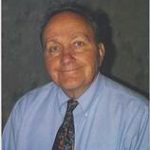Meanwhile, he continued to build the program at Penn into a world-class research and teaching center. Dr. Schumacher had strong early support for his investigations. Dr. Hollander helped him secure an electron microscope for his own laboratory and he himself successfully garnered grants for his own projects. In 1975 alone, more than 15 papers addressed a range of investigations, from rheumatological manifestations of sickle cell disease, to electron microscopic studies of ear cartilage in relapsing polychondritis, to vitamin B6 levels in rheumatoid arthritis.5-7
And That’s Not Interesting?
During our interview, Dr. Schumacher explained his approach to clinical care. “A good rheumatologist,” he says, “has to spend time with people, because we don’t have abracadabra cures. You may notice that I use the term ‘people’ instead of ‘patients.’ I don’t like the concept that, when we call them patients, somehow they belong to us, that we’re superior.”
Dr. Schumacher’s former fellows valued his clinical and investigatory skills. Joan M. Von Feldt, MD, MSEd, professor of medicine in the division of rheumatology at Penn and a member of The Rheumatologist’s editorial board, was a fellow in 1987. “One of the things I have loved about Ralph is that a patient wasn’t just a patient—every patient might have something that would be worth studying,” she says. “This quality, I think, spoke to his incredible intellectual curiosity and his approach to scientific inquiry. I now try to do the same thing—to have trainees look at patients not just for their clinical care, but how [their condition] can inform us about a diagnosis or a disease that we don’t understand very much about.”
Another former fellow, Eric P. Gall, MD, is currently professor and chair of medicine; chief of rheumatology and immunology; and professor of microbiology and immunology at the Chicago Medical School, Rosalind Franklin University of Medicine and Science. Called for a rheumatology consult his first day as an attending fellow in 1970 at the Philadelphia VA, he saw an older man who had “garden-variety osteoarthritis of the hands,” he says. When he presented the case to Dr. Schumacher, Dr. Gall intimated that the man’s condition was not very interesting—even though he only had osteoarthritis on the second and third fingers of both hands. At the bedside, Dr. Schumacher questioned the man about his occupation. A retiree, the man worked in an amusement park, transporting children in a horse-drawn cart. “And, where do you hold the reins?” asked Dr. Schumacher. The man replied: “Between my second and third fingers.”

